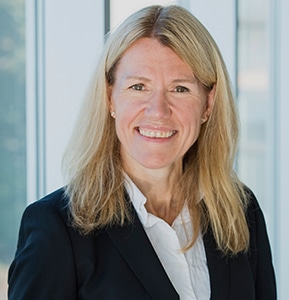
Dr. Jean Seely, renowned breast radiologist based in Ottawa, is committed to reducing the mortality and morbidity of breast cancer and to providing high quality breast imaging nationally and internationally. This month we highlight her contributions to the field with an emphasis on her interest in diversity, equity, and inclusion in radiology. Dr. Seely suggests strategies to improve gender inequities that hinge on data collection, education, and communication.
Dr. Seely is a full Professor of Medicine in the Department of Radiology at the University of Ottawa. She is Head of the Breast Imaging Section at the Ottawa Hospital and is the Regional Breast Imaging Lead for the Ontario Breast Screening Program in the Champlain region. She is the President of the Canadian Society of Breast Imaging (CSBI). Dr. Seely is the Co-Chair of the CAR Breast Imaging Working Group and serves on the Executive Board of the CAR Mammography Accreditation Program (MAP). She also serves on the Editorial Board of the Canadian Association of Radiology Journal (CARJ) and of the Journal of Breast Imaging. She contributes a regular column on Canadian breast imaging for the Society of Breast Imaging newsletter.
Dr. Seely’s research interests include breast MRI, breast cancer screening, quality in breast imaging and patient experiences. She has published 80 peer reviewed papers and 10 chapters on breast and chest imaging. She serves as Co-Chair of the Ottawa Hospital Female Physician Leadership Committee. Dr. Seely has been honoured by becoming a Fellow of the Society of Breast Imaging. She has been nominated for several leadership and mentorship awards at the Ottawa Hospital and the University of Ottawa and recently was awarded the Order of the Beaver, an international award for breast cancer screening advocacy.
Dr. Seely asserts there is good evidence demonstrating that gender equity and diversity promote stronger and more successful organizations, which would be beneficial to the radiology community.
“Promotion of gender equity and diversity is an important factor in attracting new and talented students to the specialty of radiology,” says Dr. Seely.
She is keen to improve knowledge of this area and promote awareness of the benefits of equity and diversity. Data collection, education, and communication are strategies to achieve these goals.
Data Collection
Obtaining accurate, Canadian data is the first step to identify gender inequity. If we are not aware of the problem, we cannot address it. As a competitive field, if we learn that as a subspecialty of medicine we do not compare as well to other fields then we will address this. The authors of an American College of Radiology study identified a 10-fold difference in radiologists’ experience of unfair or disrespectful treatment according to gender and race. Women were significantly more likely than men to report such treatment attributable to gender (50.6% versus 5.4%), and 27.9% of underrepresented minorities compared with 2.6% of white non-Hispanic respondents reported such treatment attributable to race/ethnicity. The Canadian Medical Association undertook a study to compare gender-based differences in financial compensation based on the same number of hours worked. Among radiologists, there was a 1.3-times increase in payment to male than to female Radiologists, ranking in the middle range of physicians as compared with other specialties.
Education
Education is needed to achieve sustainable change. Learning about the role of unconscious biases and hidden culture will reduce the barriers to having women radiologists rising to leadership roles and gender pay inequities. Increasing the awareness of inequities of the fee schedules in our provinces and territories will enable changes to reduce or eliminate the gender pay gap inequities. Offering leadership courses to promising early-career female leaders will provide needed access to effective skills that will help to improve and hone their leadership qualities.
Communication
Effective communication is essential to lead change. Direct communication about why change is needed, what is required, and developing a community to support this change are central to this effort. The CSBI has convened a community of radiologists working with allied health professionals to improve patient care and provide a corrective revision to the 2018 Canadian Task Force for Breast Cancer screening guidelines. This emphasis on communication and collaborative approach also led to a strong response to the challenges offered by COVID-19, allowing the May 2020 publication of “COVID-19: Safe guidelines for Breast imaging during the pandemic,” already cited and downloaded 3,387 times. Fostering collaboration with other groups across the country has improved awareness and led to an improved strategy to support our initiatives.
Canadian Radiology Women (CRW) was established in 2018 to foster community, mentorship, leadership, and diversity. The group has already held valuable sessions to raise awareness of systematic issues to address gender inequity. The CAR has committed to leading change by establishing a Working Group on Equity, Diversity, and Inclusion. Other groups across the country are being asked to do this in their respective hospitals, universities, and communities and the CAR can offer effective leadership in this domain. Creating a network of support and hub of information will foster this community approach.
